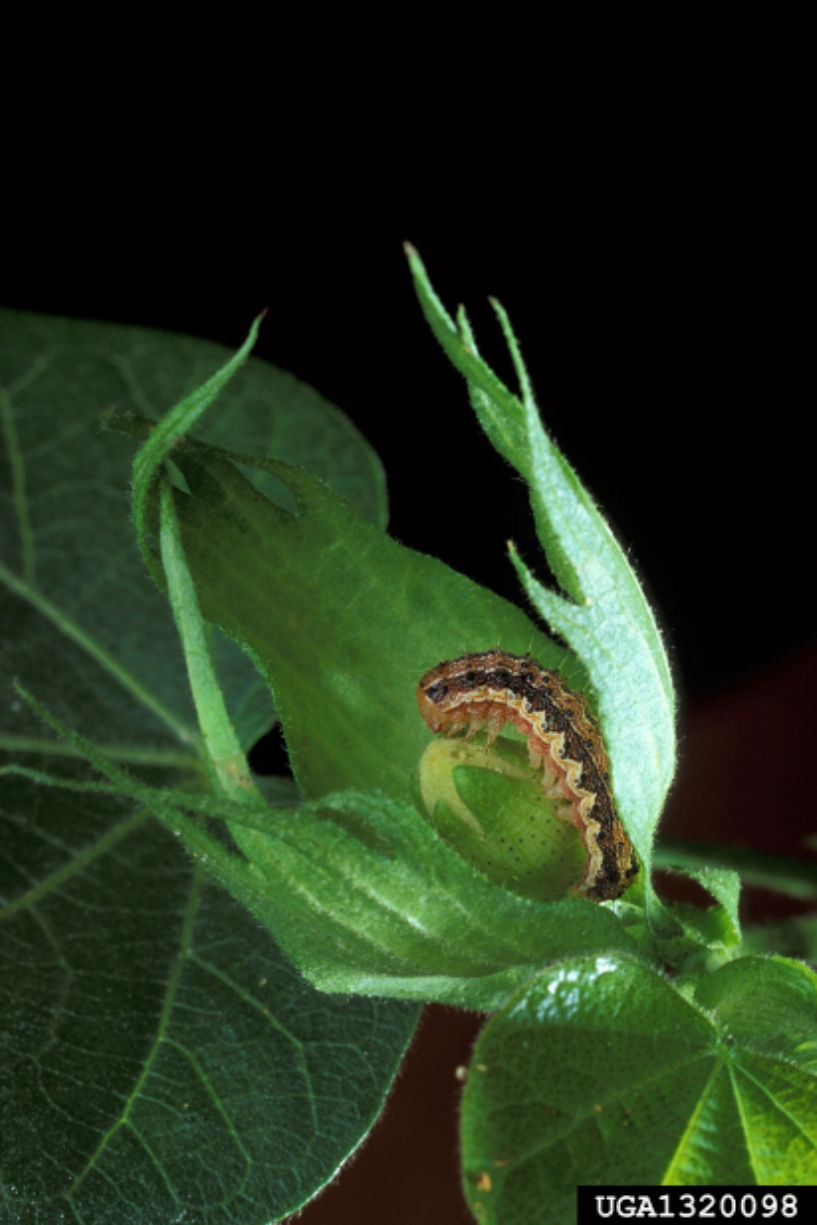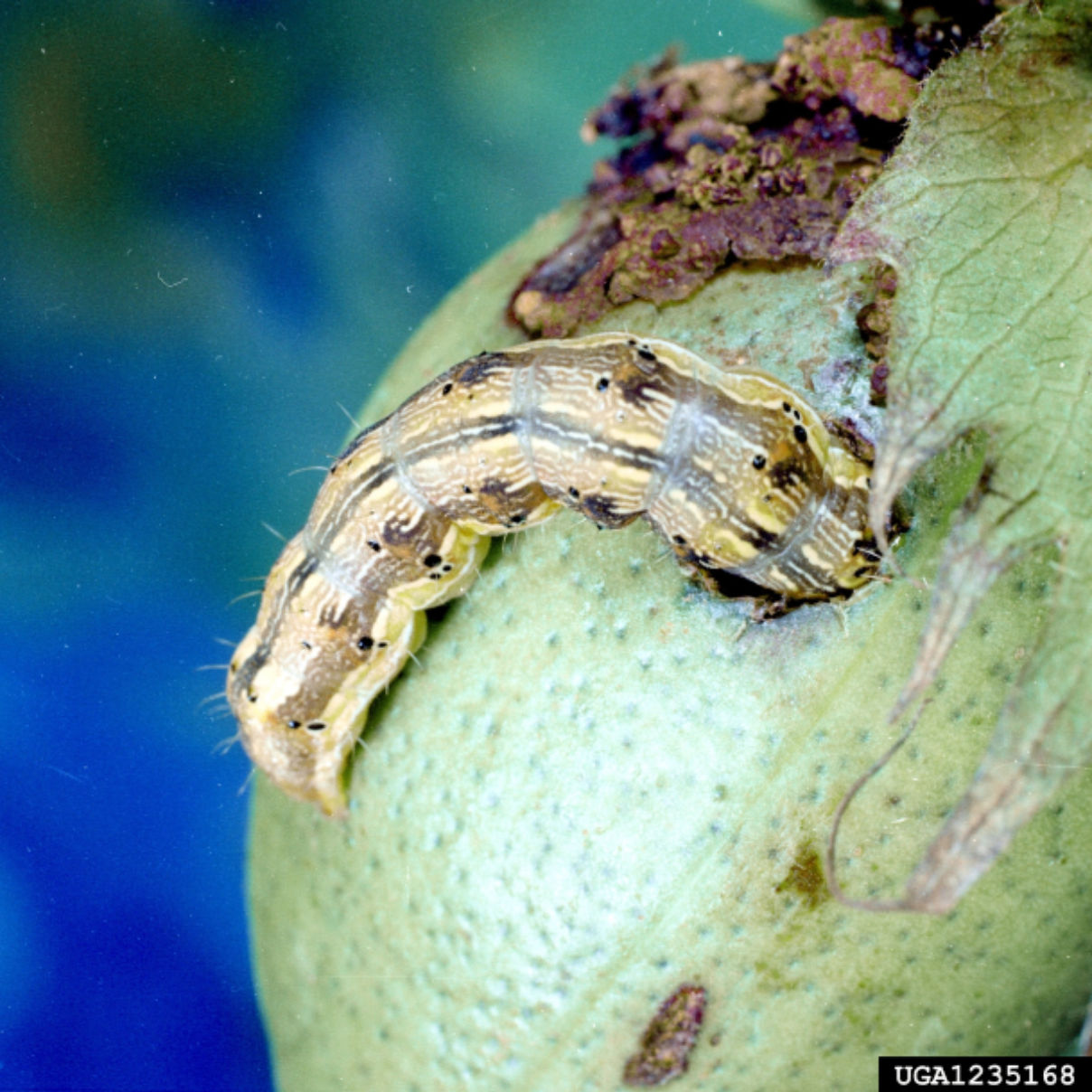5 MIN READ
Scout Early for Bollworms in Cotton
August 23, 2024
Mild winters and good growing conditions in the spring and early summer can encourage a cotton crop to produce lush growth. Unfortunately, the same conditions are ideal for bollworms (Helicoverpa zea, otherwise known as corn earworms or sorghum headworms). Transgenic cotton products with two or more Bt (Bacillus thuringiensis) genes have resistance to bollworm damage, but under very heavy pressure even Bt crops may experience injury and potential yield loss without timely insecticide applications. Therefore, it is important to scout cotton fields for the presence of bollworms and crop injury to determine if an economic threshold has been reached.
Bollworm Identification
Moths. Adult bollworm moths are cream colored and medium sized. In regions where corn and cotton are both grown, bollworm moths typically deposit eggs in cotton fields after emerging from nearby corn fields.2
Eggs. Bollworm eggs are round, pearly white to cream in color, and roughly the size of a pinhead. Eggs turn light brown prior to hatching, which occurs three to four days after laying.1,2 Generally, bollworm moths lay eggs on either side of young, tender terminal leaves on the top third of a cotton plant, but if a plant is slow to produce new leaves—for example, during a drought—moths may deposit eggs on the lower portion of the plant.1 On cotton products with at least one Bt gene, moths may deposit eggs on blooms or bloom tags, as these plant structures tend to have a lower concentration of the Bt toxin.2
Larvae. The larvae reach about ¼ inch in length by the time they are three to four days old and continue to grow until they reach about 1.5 inches. The larvae vary in color from light green, to pink, to brown, to black, and have stripes running along their backs (Figures 1, 2, and 3). The larvae begin feeding on young leaves, leaf buds, and small squares at the top of the plant before moving down the plant to feed on larger squares and bolls.1
Scouting
Entomologists across the cotton-growing region recommend scouting cotton for bollworm eggs and small larvae at the beginning of flowering. Scouting should continue, at least weekly, if bolls have the potential to mature and produce lint. The scouting interval should be shortened to three to four days during peak bloom.2
Examine the whole plant for live larvae and injury symptoms. Include squares (Figure 1), white blooms (Figure 2), pink blooms, bloom tags, and bolls (Figure 3) in your evaluation. Larvae must feed on plant tissue to receive a toxic dose of the Bt toxin, so the presence of eggs alone does not indicate a need for insecticide treatment.



Scouting Methods
Two scouting methods are recommended by entomologists to help determine the presence of bollworms and the amount of injury that may have already occurred. When using either method, be sure to remove and check bloom tags as larvae may be hidden from view.
Terminal and Square Inspection Method
- Separate the field into four or more sections.
- Within each section, inspect the terminals of 25 randomly selected plants for small bollworm larvae. In addition, examine 25 green squares (half grown or larger) and 25 bolls of various sizes for larvae and damage.
- Determine the number squares and bolls that appear damaged.
Whole Plant Inspection Method
- Separate the field into four or more sections.
- Randomly select five groups of three side-by-side plants per section, inspecting the whole plant.
- Calculate the percentage of damaged fruit.
Chemical Control
Chemical control may be necessary if local thresholds are met. Thresholds in Bt cotton fields differ from those of conventional cotton and are based on how many larvae survive to the late first- or second-instar stage, not on newly hatched larvae or the presence of eggs. Bollworm treatment thresholds vary from state to state. Check local extension recommendations for action thresholds based on cotton growth stage. The use of a selective insecticide product—such as those containing active ingredients in the diamide, oxadiazine, and spinosyn classes—may prevent a secondary pest outbreak. Control is more effective when bollworm larvae are young and found on the upper one-third of the plant.
Sources:
1Zukoff, A., McCornack, B.P., and Whitworth, R.J. 2024. Cotton insect pest management. Kansas State University Research and Extension. https://bookstore.ksre.ksu.edu/download/cotton-insect-pest-management-2024_MF2674
2Bollworm and tobacco budworm. In, Cotton insect management guide. Texas A&M AgriLife Extension. https://cottonbugs.tamu.edu/fruit-feeding-pests/bollworm-and-tobacco-budworm/
Web sources verified 08/02/24. 1415_9657